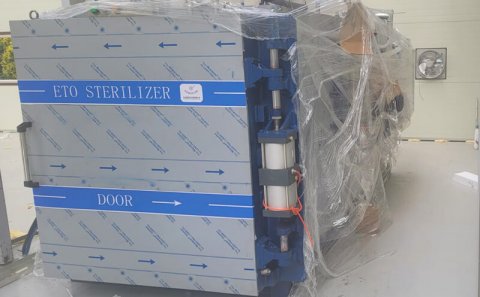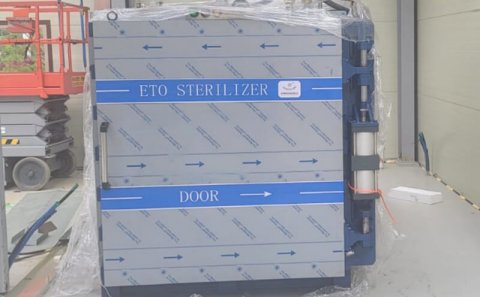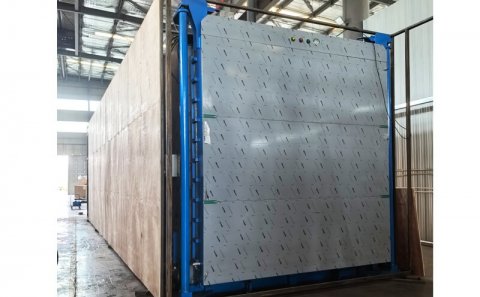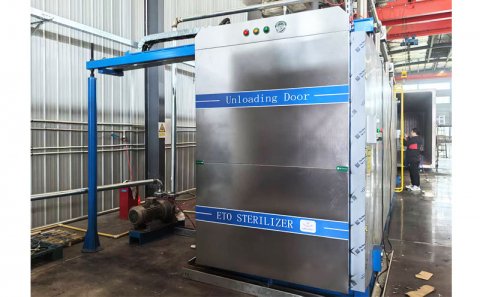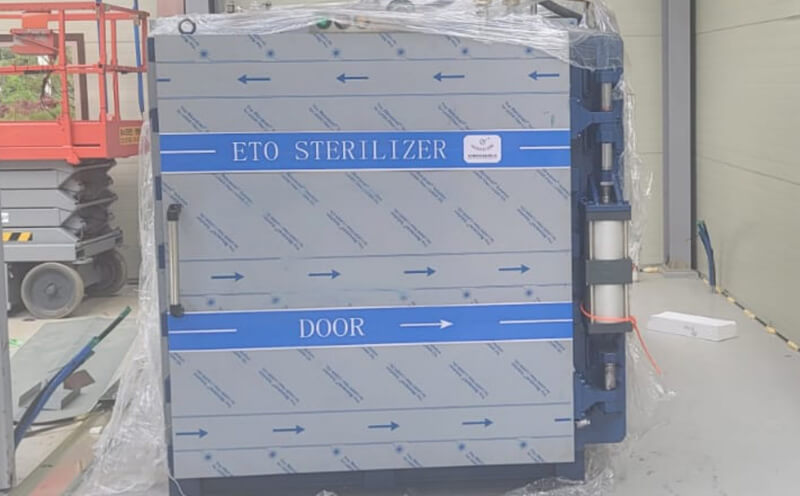
Sterilization procedure
1.The sterilization procedure of ethylene oxide shall include preheating, pre wetting, vacuuming, entering the gasified ethylene oxide to reach the predetermined concentration, maintaining the sterilization time, removing the ethylene oxide gas in the sterilization cabinet, and resolving to remove the ethylene oxide residue in the sterilized articles.
2.100% pure ethylene oxide or a mixture of ethylene oxide and carbon dioxide can be used for sterilization. The use of Freon is prohibited.
3.The analysis can be continued in the ethylene oxide sterilization cabinet or put into a special ventilation cabinet, and natural ventilation method should not be used. The repeatedly input air shall be filtered with high efficiency, and 99.6% of particles ≥ 0.3um can be filtered.
4.Ethylene oxide residue mainly refers to ethylene oxide left in articles and packaging materials after ethylene oxide sterilization and its two byproducts, chloroethane and ethylene glycol ethane; contact with excessive ethylene oxide residue can cause burns and irritation to patients. The amount of ethylene oxide residue is related to sterilization materials, sterilization parameters, packaging materials and packaging size, loading capacity, analytical parameters, etc. When the temperature of PVC conduit is 60 ℃, it can be resolved for 8h; when the temperature is 50 ℃, it can be resolved for 12h. Some materials can shorten the resolution time, such as metal and glass can be used immediately, and some materials need to extend the resolution time, such as the built-in pacemaker.
5.Ethylene oxide emission: the first choice for hospital ethylene oxide emission is the atmosphere.
During installation, it is required that there must be a special exhaust pipe system, and the exhaust pipe material must be ethylene oxide which cannot be penetrated through, such as copper pipe. There shall be no combustibles or air inlets such as doors or windows in the building within 7.6m from the exhaust port; if the length of the vertical part of the exhaust pipe is more than 3m, a water collector must be installed, so as not to make the exhaust pipe sunken or looped to cause water gas accumulation or ice in winter to block the pipe; the exhaust pipe shall be led to the outdoor and reversed downward at the outlet to prevent water gas from remaining in the pipe wall or causing pipe wall block ; professional installation engineer must be employed and the installation must be carried out according to the requirements of ethylene oxide sterilizer manufacturer. For example, if ethylene oxide is discharged into the water, the whole discharge system (pipeline, water tank, etc.) must be sealed, otherwise a large number of hot ethylene oxide will overflow from the water and pollute the surrounding working environment.
Matters needing attention
(1) Temperature and relative humidity have great influence on the sterilization effect of ethylene oxide, so the relevant conditions in the test should be strictly controlled.
(2) Ethylene oxide liquid can dissolve polyethylene, polyvinyl chloride, etc. do not drop its liquid on such articles. No matter liquid or gas, ethylene oxide can damage Celluloid products. Attention shall be paid during test.
(3) Ethylene oxide is inflammable and explosive. Fire and explosion proof measures shall be taken at the operation site, and there shall be no open fire operation and electric spark.
(4) Inhale too much ethylene oxide gas, can cause headache, vomiting and other toxic symptoms, serious cases can cause pulmonary edema and so on. Good ventilation shall be provided in the working environment. The concentration of ethylene oxide shall not exceed 1.82mg/m3 (1ppm) in 8h daily operation and 9.1mg/m3 (5.0ppm) in 15min operation. In case of poisoning symptoms, leave the site immediately. The lighter should breathe fresh air until the symptoms are eliminated; the heavier should be sent to the hospital in time for treatment.
Jun 17, 2025
view: 1200
ETO sterilization is often used in the packaging of medical devices. Lets first understand what is ethylene oxide sterilization: Ethylene oxide (ETO) is a kind of broad-spectrum and efficient gas sterilization agent, which has strong penetrability to...
Read More
Jul 04, 2022
view: 1923
Presumably, people all know that there are a lot of germs in todays environment. Officially, because of this, the sterilizer industry is expanding from time to time. There are many kinds of sterilizers, including ethylene oxide sterilizers....
Read More


